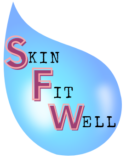Table of Contents
What is Phenoxyethanol?
Phenoxyethanol is a clear liquid that can be used in a variety of different products. These include perfume fixatives, insect repellent, and an antiseptic (1).
It acts as a preservative in cosmetics. Not only is it able to protect against bacteria, but yeast as well. Generally, it is well-tolerated by most people. It is used in concentrations of less than 1% in cosmetic formulations. You can usually find it at the bottom of the list of skincare ingredients in cosmetic formulations.
Side Effects

While phenoxyethanol is considered safe to be used in small concentrations in cosmetics, there are known issues regarding this ingredient when administered or exposed to at higher doses.
After oral administration of phenoxyethanol to rats at high concentrations, it was apparent that the red blood cells were destroyed (hemolysis). In addition, there was damage to the liver of the rats (2). Rabbit dermal experiments have also found that phenoxyethanol is also toxic through dermal absorption, which means that applying it topically at high concentrations is toxic.
Symptoms of exposure to high concentrations of phenoxyethanol include eye irritation, headaches and even the depression of the nervous system (2). If it is inhaled, it can lead to mild symptoms like a sore throat, but may also cause more serious symptoms like slurred speech.
Symptoms of topical application of phenoxyethanol include skin redness and dryness. More severe symptoms include numbness and pain.
Is It Bad For Acne?
Thus far, we have explained the potential side effects of phenoxyethanol in high concentrations. However, most of the cosmetic formulations available over the counter will not contain such high concentrations of this ingredient. So is it bad for your acne?
Multiple case studies have reported adverse side effects even though the concentrations of phenoxyethanol in skin care products are likely to be less than 1%.
One case study showed immediate hypersensitivity after topical application of a body cream containing a small amount of phenoxyethanol (2). Hypersensitivity is characterized by an increase in redness, irritation, stinging or inflammation on the skin after application of a topical substance. In this case, the hypersensitivity was in the form of eczema, which commonly presents itself as itchy, red, and dry skin.
A patch test of the area showed that this patient had an allergy to 1% phenoxyethanol, which is the concentration of phenoxyethanol in many cosmetic formulations. The condition improved by avoiding the application of the body cream containing this ingredient.
In another case study, a woman was found with urticaria in response to using a body lotion with phenoxyethanol (2). Urticaria is a condition characterized by rashes, welts, and itchiness. When this patient was patch tested, they tested positive for an allergy to a 1% concentration of phenoxyethanol.
Any type of substance that leads to a compromised skin barrier can lead to inflammation and acne formation. In this case, if the eczemic reaction to the cream happened on the face, dryness and irritation can lead to itching, which can lead to transfer of oils and bacteria from the hand to the face, possibly causing a breakout. In addition, a compromised skin barrier cannot hold water effectively, therefore drying out the skin and leaving the barrier exposed to external pollution and bacteria that can cause acne.
Should You Use Phenoxyethanol In Your Skincare Products?
As always, your mileage may vary. While phenoxyethanol is deemed safe to use in cosmetic formulations, your skin may react poorly to cosmetics containing this preservative. It is imperative that you patch test your skincare products for 24 hours on a small section of your face. If no allergic reactions occur, proceed with caution and monitor your skin for a 2 week period of consistent application to see whether or not you will break out from skincare products containing this ingredient. Always be aware of the ingredients in cosmetics and seek alternatives if necessary.
References
(1) https://pubchem.ncbi.nlm.nih.gov/compound/2-Phenoxyethanol#section=Toxicity-Summary
(2) https://pubchem.ncbi.nlm.nih.gov/compound/2-Phenoxyethanol#section=FDA-Requirements

